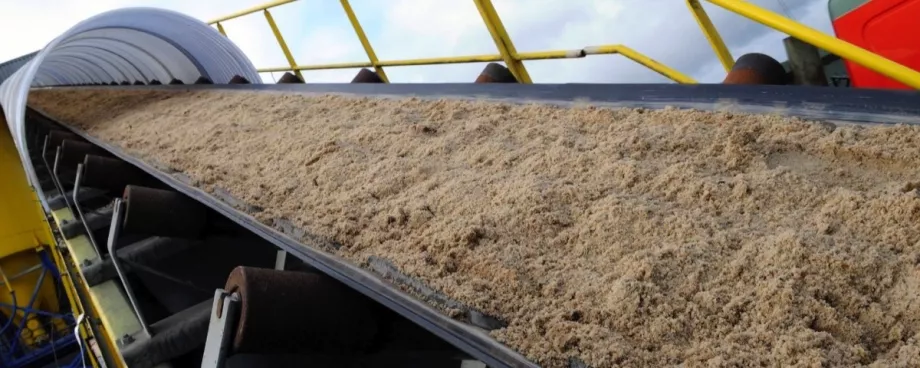Thicker is not always better
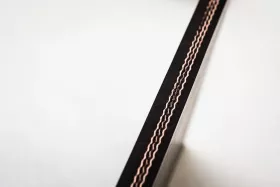
The actual thickness of the cover is an important consideration. Generally speaking, the more abrasive the material and the shorter the conveyor, the thicker the cover should be. In principle, the difference in thickness between the top cover and the bottom cover should not exceed a ratio of more than 3 to 1.
In an effort to extend operational lifetime, many conveyor belt users resort to fitting belts with increasingly thicker covers. However, covers that are too thick can potentially cause other problems. In reality, the single most important factor is the actual abrasion resistance of the belt cover rubber.
How Ozone & Ultra Violet Light contribute to rapid Wear
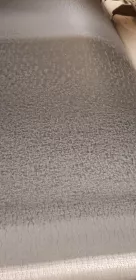
There is absolutely no question that ALL rubber conveyor belts should be fully resistant to the damaging effects of ozone and ultra violet light. This is because ozone becomes a pollutant at ground level. Exposure increases the acidity of carbon black surfaces and causes reactions to take place within the molecular structure of the rubber. This has several consequences such as surface cracking and a marked decrease in the tensile strength of the rubber. Likewise, ultraviolet light from sunlight and artificial (fluorescent) lighting also accelerates deterioration. This is because it produces photochemical reactions that promote the oxidation of the surface of the rubber resulting in a loss in mechanical strength. In both cases, this kind of degradation causes the covers of the belt to wear out even faster than it should.
Rubber belts that are not fully resistant to ozone and UV can start to show signs of degradation even before they have been fitted to a conveyor simply by being exposed to the open air and daylight. Sadly, despite its crucial importance in terms of operational lifetime, ozone and UV resistance is very rarely, if ever, mentioned by traders or manufacturers. This is almost certainly because the anti-ozonants that need to be used during the mixing process of the rubber compounds are relatively costly. Building that ‘avoidable’ cost in would immediately make the belt less competitive on price. My advice is to always make ozone & UV resistance a required part of the specification when selecting any rubber conveyor belt.
Abrasive Wear Standards and Test Methods
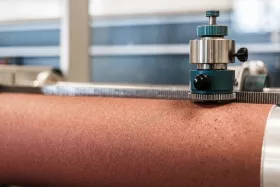
There are two internationally recognised sets of standards for abrasion, EN ISO 14890 (H, D and L) and DIN 22102 (Y, W and X). In Europe it is the longer-established DIN standards that are most commonly used. Generally speaking, DIN Y (ISO 14890 L) relates to ‘normal’ service conditions. In addition to resisting abrasive wear DIN X (ISO 14890 H) also has good resistance to cutting, impact and gouging. DIN W (ISO 14890 D) is usually reserved for particularly high levels of abrasive wear.
The test method for abrasion (ISO 4649 / DIN 53516) is actually quite simple. Abrasion resistance is measured by moving a test piece of rubber across the surface of an abrasive sheet mounted on a revolving drum. It is expressed as volume loss in cubic millimeters, for instance 150 mm³. The most important thing to remember when comparing abrasion test results (or promises! ) is that higher figures represent a greater loss of surface rubber which means that there is a lower resistance to abrasion. Conversely, the lower the figure the better the wear resistance.
Comparing (evaluating) one offer from another is made very difficult by virtue of the fact that (with only one exception that I know of) the technical datasheets provided by manufacturers and traders will almost invariably only show the minimum figure demanded by a particular test method or quality standard rather than the actual performance that the belt being offered would be expected to achieve.
It is important that buyers of conveyor belts remember that DIN and ISO standards are only the minimum benchmark of acceptability. Even then, laboratory tests consistently reveal that despite the claims of the manufacturers, more than 50% are found to be significantly below those minimum standards.
One for the Price of Two?
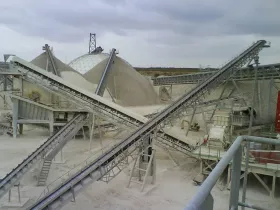
There is a lot more to conveyor belts than meets the eye. Fitting and replacing two or three ‘economically priced’ belts rather opting for the longer operational lifetime provided by a single, good quality abrasion resistant belt is invariably a false economy and much more hassle in the long run! As often as not, the quality of a belt is reflected by its price so it is always worth the effort to check and compare the original manufacturer’s specifications very carefully and ask for documented evidence of compliance and performance.
■









